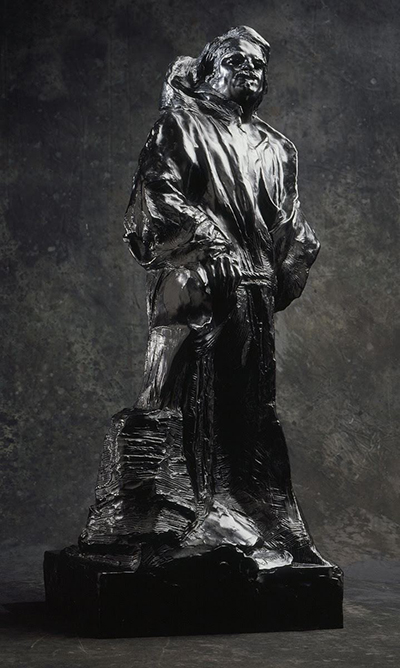Balzac in the Robe of a Dominican Monk was a bronze sculpture produced by French sculptor Auguste Rodin in 1892. The piece can be found in the impressive collection of the Museo Soumaya in Mexico City which hosts a great selection of European art within their extensive collection.
He was working at this time on a number of study pieces for a Monument to Balzac, which was an important commission that he was planning in great detail. The ovreall project was commissioned by the Society of Men of Letters of France as a tribute to novelist Honoré de Balzac. Rodin actually received the work a year before this study piece was completed, underlining how he spent considerable amounts of time in planning the final creation and considered elements of it individually, one at a time. Rodin also liked to produce most of his sculptures from live models, or at the very least, drawings or photographs of them. Unfortunately, Balzac had already passed away and so the sculptor was forced into alternative methods of planning this portrait.
Rodin soon discovered, to his dismay, that the individual that he needed to capture within this sculpture was not overly interesting in appearance whilst alive. He would research this individual in depth to see him from different angles as if he was still alive, but realised that Balzac was short and rotund in figure, which was never a shape that he would have chosen by choice. His models had always been toned and young, slim and healthy without being too overly muscular. Despite that realisation, the sculptor carried on regardless and just considered this a challenge to his creative prowess. Rodin would go on to produce several different interpretations of this man with this one being the only that captures him wearing clothing that pointed to the Dominican order.
The Museo Soumaya in Mexico City features an impressive collection covering local Latino artists as well as a good number from Europe, with both painting and sculpture well represented. They hold elements from Rodin's own The Kiss, Ovid's Metamorphoses and The Gates of Hell along with some highlights from other notable artists such as Camille Pissarro, Edgar Degas, Pierre-Auguste Renoir and El Greco. In terms of more local offerings, they have Diego Rivera and Rufino Tamayo here and the overall collection was reasonably estimated at valuing $700m, although today it is likely to have risen far beyond that. Their array of Rodin's work is believed to be the largest private collection of his work anywhere in the world.




